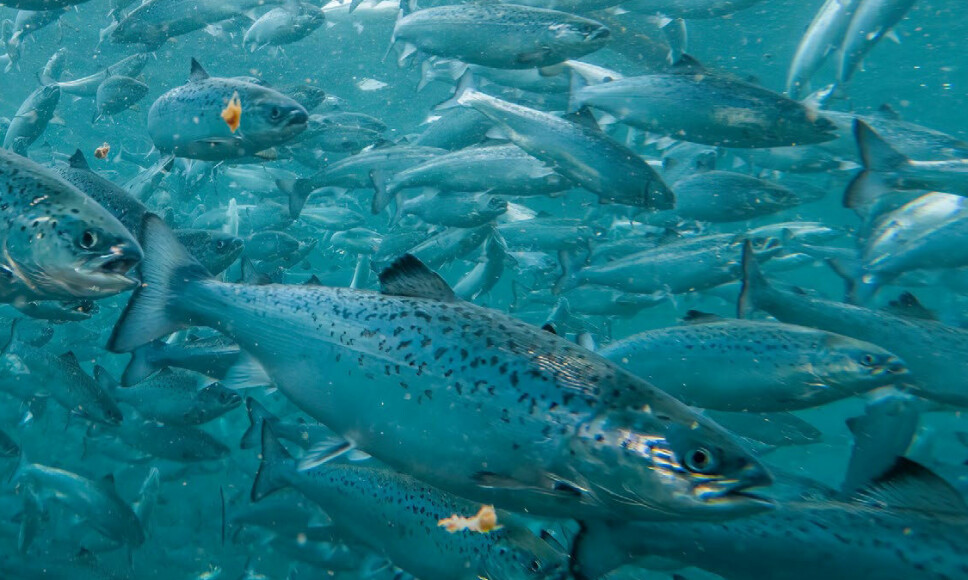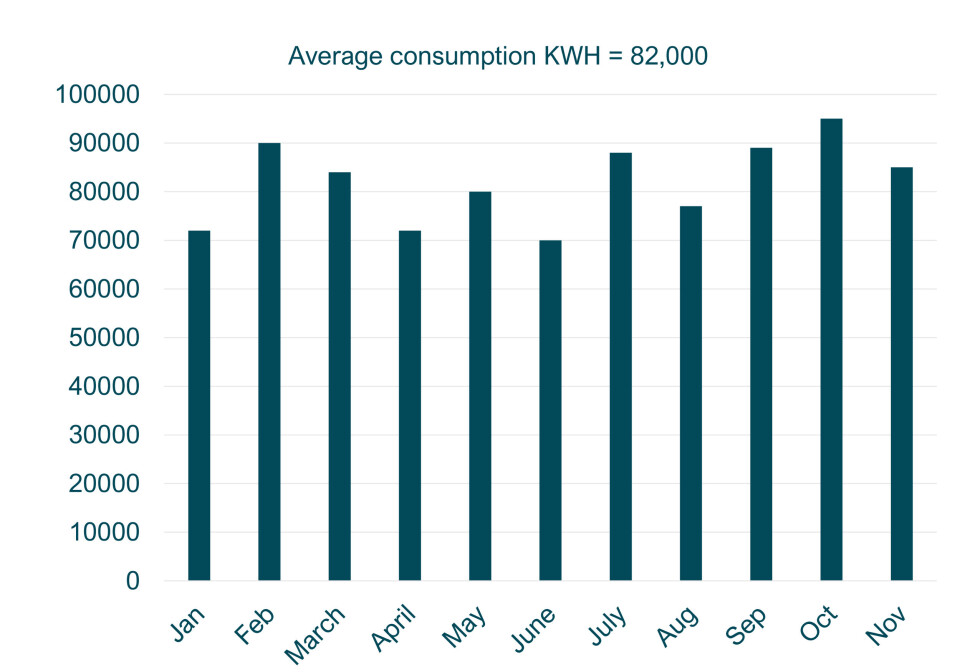
On-land fish farmer has treated stock for lice
Andfjord Salmon used Slice after ‘Scottish’ parasite entered flow-through pool
Norwegian on-land salmon farmer has revealed that it has had to treat fish for so-called “Scottish lice” that found their way into the company’s flow-through pool.
Andfjord Salmon pumps seawater into the tank from a depth of 40 metres, well below the depth where the salmon louse, Lepeophtheirus salmonis, is usually found. But that has not prevented another species of louse, Caligus elongatus – known in Norway as the Scottish louse – from entering the pool.
During a question-and-answer session after the presentation of the company’s third-quarter results today, chief executive Martin Rasmussen was challenged that the company had used medicines against lice, given that “no lice” is one of its selling points.

No problem with leps
“We have a water intake of 40 metres, and that is below the level where salmon lice live,” said Rasmussen. “We have been operating now for over five months and we have so far not had the problem with [salmon] lice, despite the fact that the region had significantly more problems with lice this year, so it shows how effective Andfjord’s method is against lice.”
But he also confirmed that Andfjord had used the emamectin benzoate treatment Slice to control parasitic crustaceans.
“Yes, we ran a Slice treatment in August against lice, a treatment at an extremely low level. This regimen also provides a preventive effect for a few weeks. What we see now over an entire period is that it [the louse] has not been able to establish itself, and it is at an extremely low level. We see that the environment in the pool is a good environment for salmon and a bad environment for lice.”
He also emphasised that there is a big difference between Caligus elongatus and salmon lice.
“The Scottish louse live on all types of wild fish, both herring, mackerel and cod, and it jumps off and on the fish and therefore has a completely different behaviour to salmon lice and is thus much easier to treat,” said Rasmussen.
Cheaper than an apartment
Many of the questions Rasmussen and chief financial officer Bjarne Martinsen received were about energy consumption and costs.
“We have so far had an electricity consumption of approximately 80,000 kWh per month. We are therefore below 1 kg/kWh, which is in line with our target,” said Rasmussen.
Martinsen said that the electricity bill in August was approximately NOK 10,000 (£833).
“It’s like an apartment in Oslo. It is therefore cheaper to have 1,000 tonnes of salmon in Northern Norway than it is for a family with small children in Oslo,” commented Rasmussen wryly.
“There is no doubt that we have a low energy consumption. If we had a RAS (recirculating aquaculture system) concept here, we would have to count on 5-6 times more energy per kilogram. With little consumption of something that has a low price, there will of course be low production costs.”

However, despite the fact that there is some uncertainty regarding electricity prices going forward, the company has not entered into long-term fixed price contracts for electricity.
“No, we have not done that. It does not pay for us to be preoccupied with our consumption now. But when the volumes eventually get bigger, that is something we will look at,” said Martinsen.
0.9 FCR
An important factor when it comes to production cost is the feed conversion ratio. Here too, Andfjord Salmon delivers well.
“We use specially developed feed with added raudåte (Calanus finmarchicus, a small planktonic copepod). Raudåte is a natural starter feeding organism for the wild salmon and it also acts as a flavour enhancer. Therefore, we see that the fish are eating well, and we have so far had an FCR of less than 0.9. Considering that the industry standard is 1.35, this gives us an extremely large cost advantage only when it comes to feed,” said Martinsen.
Andfjord Salmon can also thank good water temperatures for the fact that its fish grow well. The company’s use of water from a depth of 40 metres means it has a slightly different temperature profile than someone who operates in open cages in the sea in the area.
“Up until September we had an average of 12 degrees, in October it dropped to approximnately 11, and now we are in excess of 8 degrees. So, we have a higher temperature than the sea-based farmers, and now in winter we will really see a good effect of the Gulf Stream,” he said.
NOK 40/kg cost
Andfjord can also document that the fish have eaten well. After being stocked as 150-gram smolts in June, they passed 1 kg on 31 October, two months ahead of schedule. By November 30, the fish had an average weight of 1.35 kilos.
“And five months after hatching, 98.7% of the individuals are alive. Here in the region we tend to say that if there is less than 3% mortality in the first three months, then you have had a good smolt output,” said Martinsen, pointing out that the Norwegian Veterinary Institute’s latest Fish Health Report stated that for sea-based salmon farming in Norway in 2021 the mortality from stocking to harvest was 15.5%.
The company is working towards a production cost for the first batch of NOK 40/kg at today’s price level.























































